Research highlights

by Beraldo e Silva et al. (2025), where we use the coordinates of a stellar sample in equilibrium within a given potential to constrain that potential, but without explicitly modelling the sample’s distribution function. This is achieved by minimizing the entropy the sample would reach if it were allowed to phase-mix in trial potentials, since phase-mixing would increase the sample’s entropy. In particular, using $10^4$ tracers with 10%-uncertainties in their 6D coordinates, we recover the flattening parameter $q$ of an axisymmetric potential with $\sigma_q/q\sim 5$%.
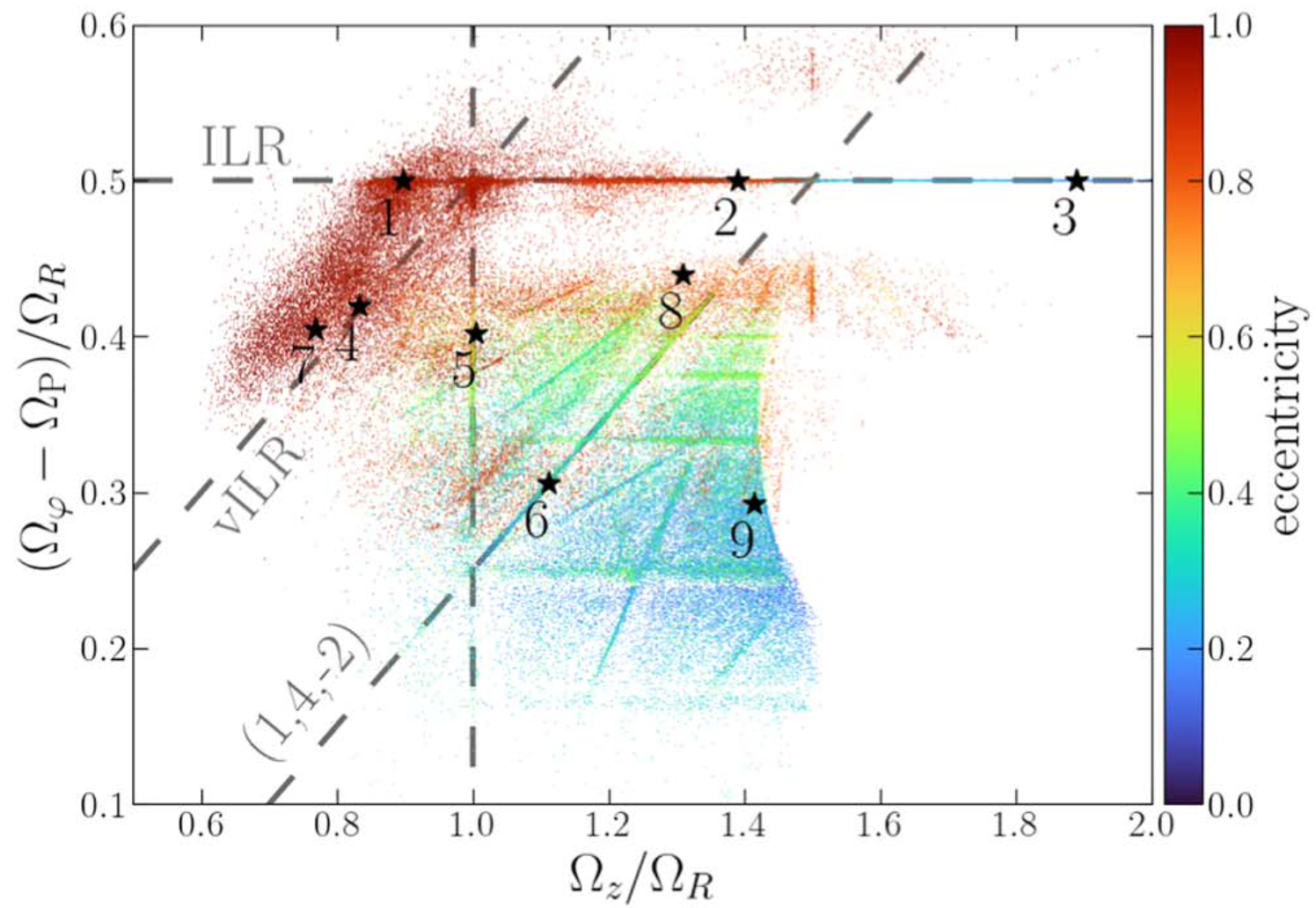
by Beraldo e Silva et al. (2023), where we show the role of resonances in shaping features in galactic bars, in the transition between their flat parts (shoulders) and box-peanut bulges. The looped orbital morphology that supports the shoulders is more markedly produced along the Inner Lindblad Resonance (ILR), in the region of orbit 2 marked in the plot. With the bar getting thicker over time, these orbits move to the left in this plot, until they cross the vertical ILR (vILR), become chaotic, more spheroidal, less shoulder-supporting and more bulge-supporting.
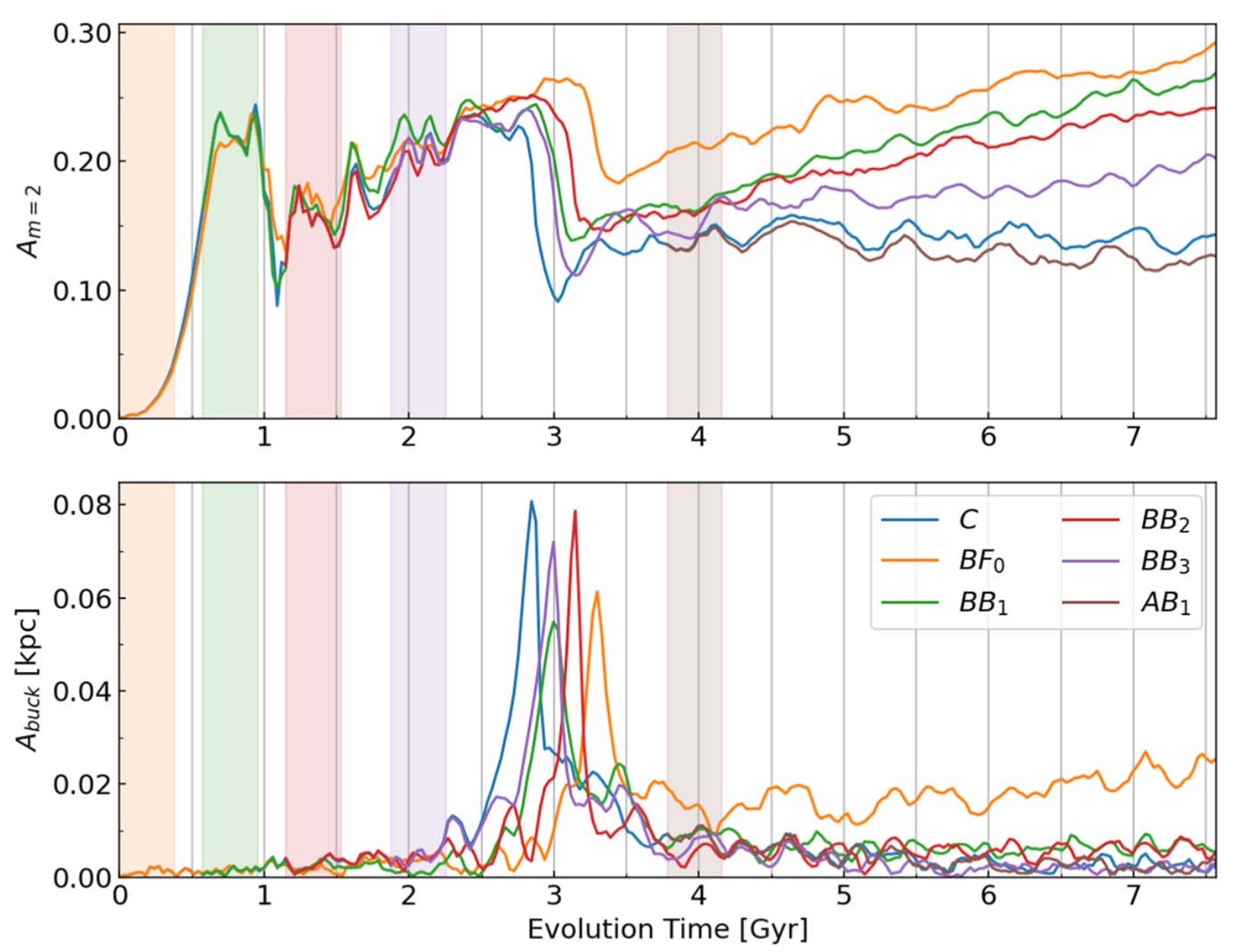
by Wheeler et al. (2023), where we show that galactic bars can peacefully grow and be stable around a supermassive black hole.

by Khachaturyants et al. (2022), where we show that prograde bending waves in galactic discs can be produced by misaligned gas accretion, and that this is a possible source of vertical perturbations in the Milky Way disc.
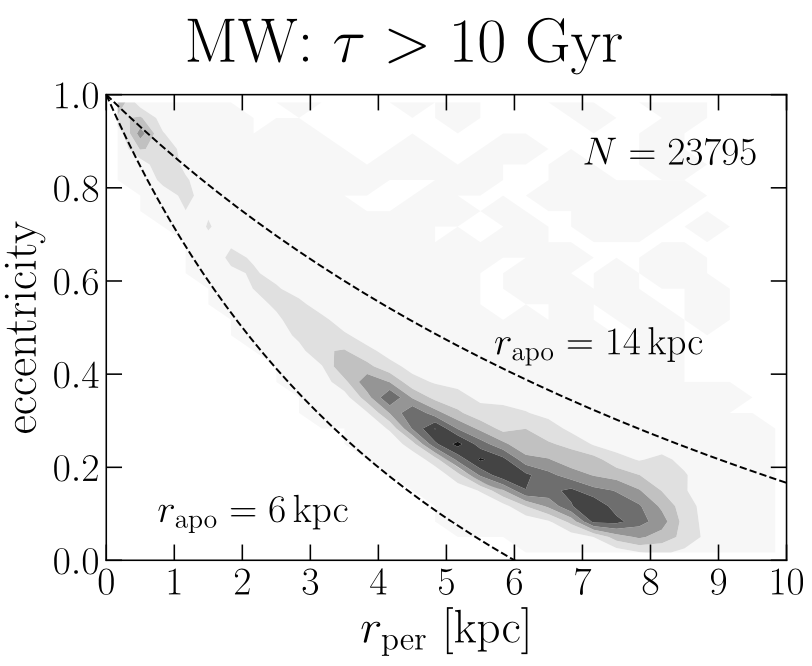
by Beraldo e Silva et al. (2021), where we find evidence for an old thin disc in the Milky Way, and show that a large population of old stars produce three peaks in the distribution of pericentric distances. The outermost peak ($r_\mathrm{per}\approx 7$ kpc) is produced by radial migration of thin and thick disc stars.
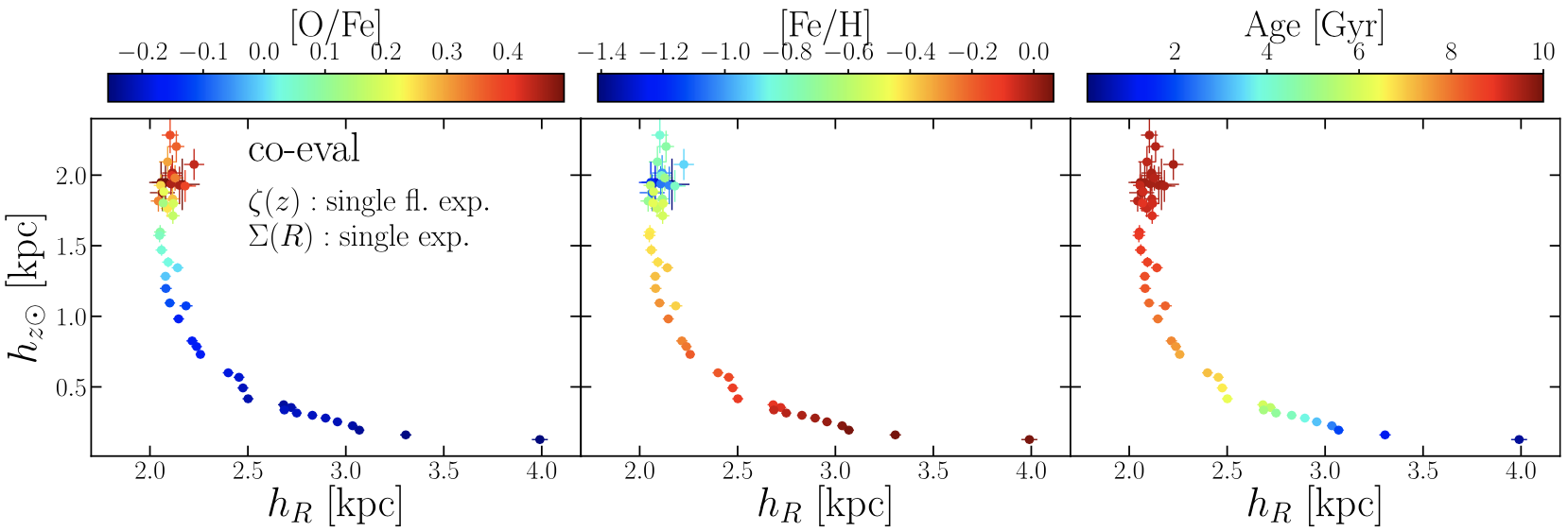
by Beraldo e Silva et al. (2020), where we show that galactic discs in simulations with clumps in their early evolution have chemo-spatial trends that agree in detail with those of the Milky Way. In particular, clumps provide a viable scenario for the formation of the thick disc.
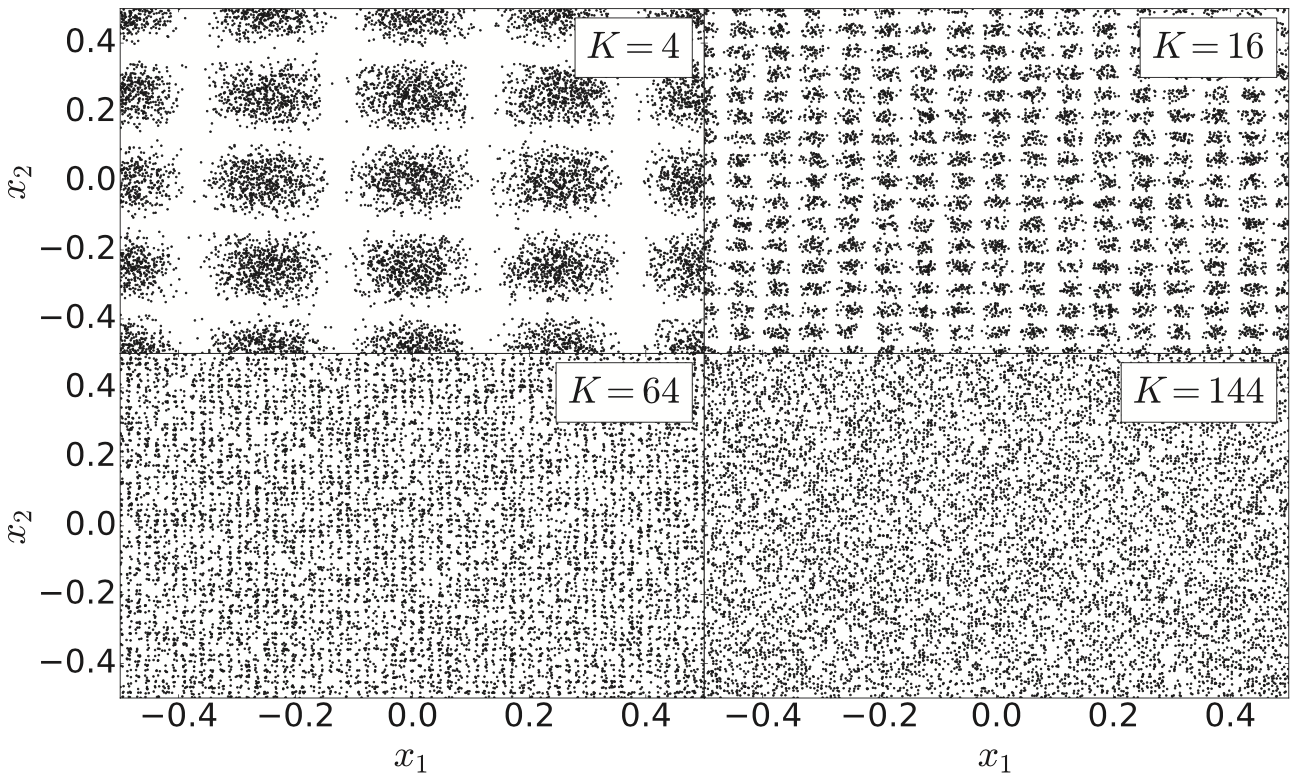
by Beraldo e Silva et al. (2019), where we show that the collisionless relexation time $\propto N^{1/6}$ (see below) is a consequence of the Nyquist-Shannon theorem for a 6D phase-space. A finite-$N$ system can develop fine phase-space structures up to a certain limit, but not indefinitely small as implied by the assumption $N\rightarrow \infty$ in the Vlasov equation.
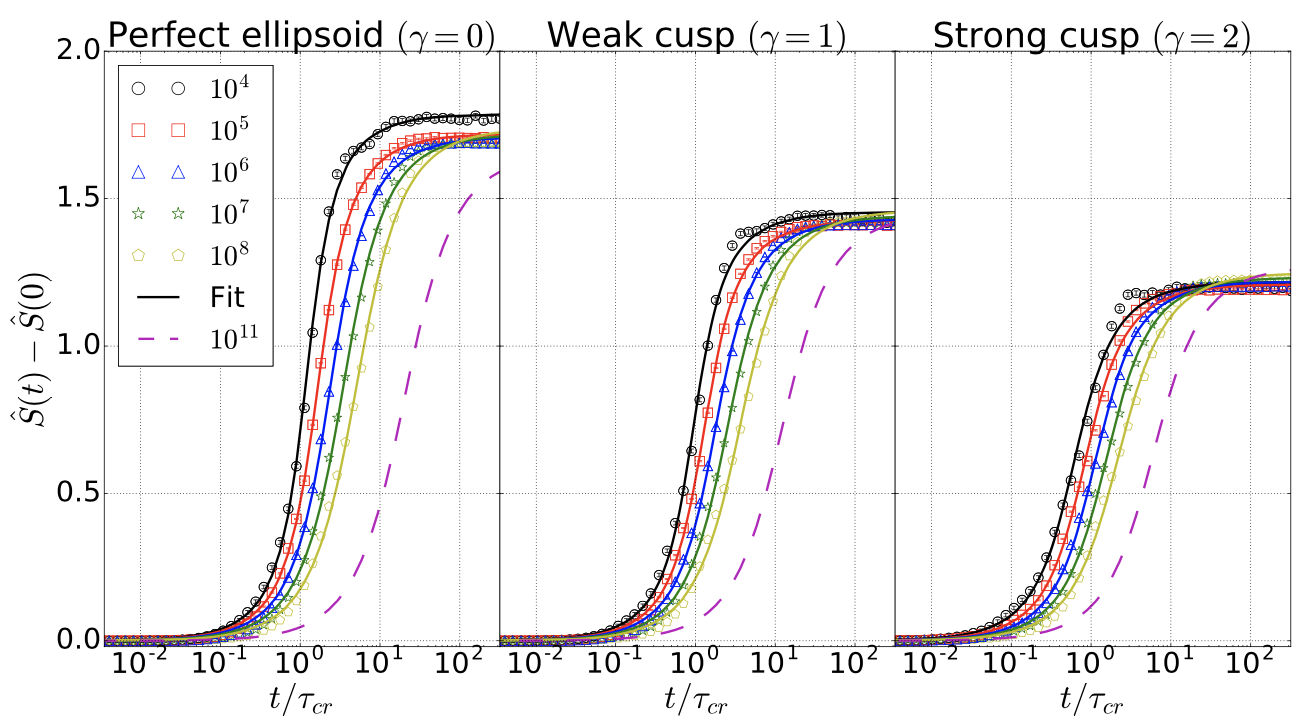
by Beraldo e Silva et al. (2019), where we investigate the macroscopic evolution of orbit ensembles in integrable and non-integrable potentials. In contrast to Vlasov eq.’s prediction, the entropy increases quickly, even in integrable potentials. Chaotic motion accelerates the evolution. The collisionless relaxation time is $\propto N^{1/6}$ or shorter.
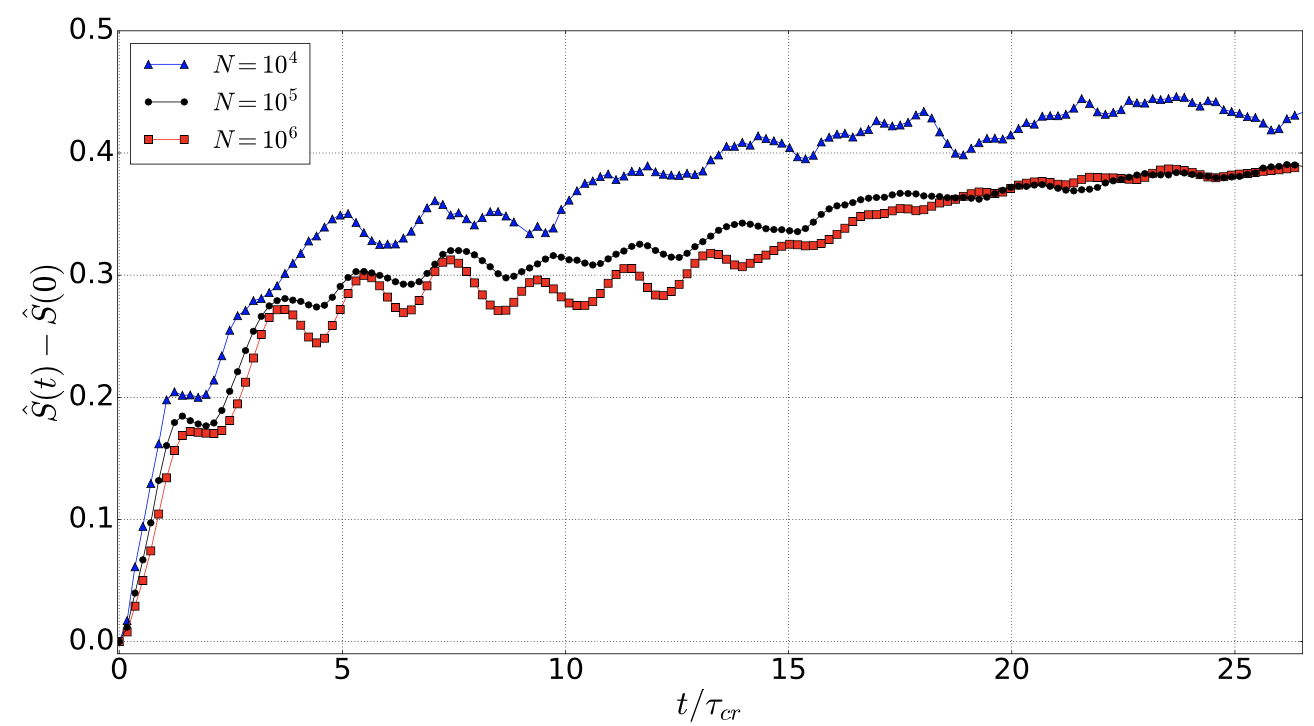
by Beraldo e Silva et al. (2017), where we investigate the macroscopic evolution of self-gravitating systems with entropy estimators in N-body simulations of different numbers of particles. In contrast to Vlasov eq.’s prediction, the entropy increases quickly. The N-dependence is weak.
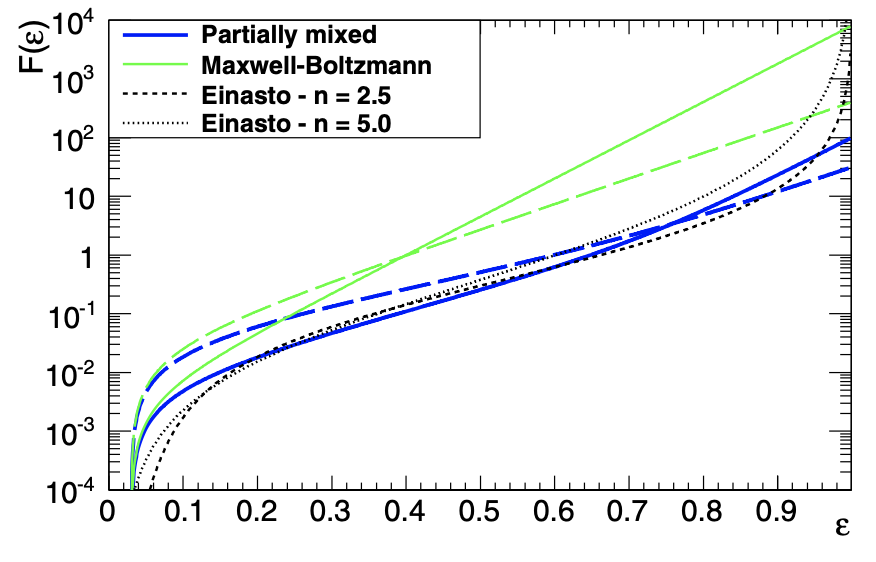
by Beraldo e Silva et al. (2014), where we associate the mixing level of particles in phase-space to their indistinguishability. This solves the Gibbs paradox without resorting to QM, predicts a more flexible distribution function (plot) and reveals a hidden hypothesis in the derivation of the Vlasov eq. (indistinguishable instead of identical particles).
Testing phenomenological and theoretical models of dark matter density profiles with galaxy clusters,
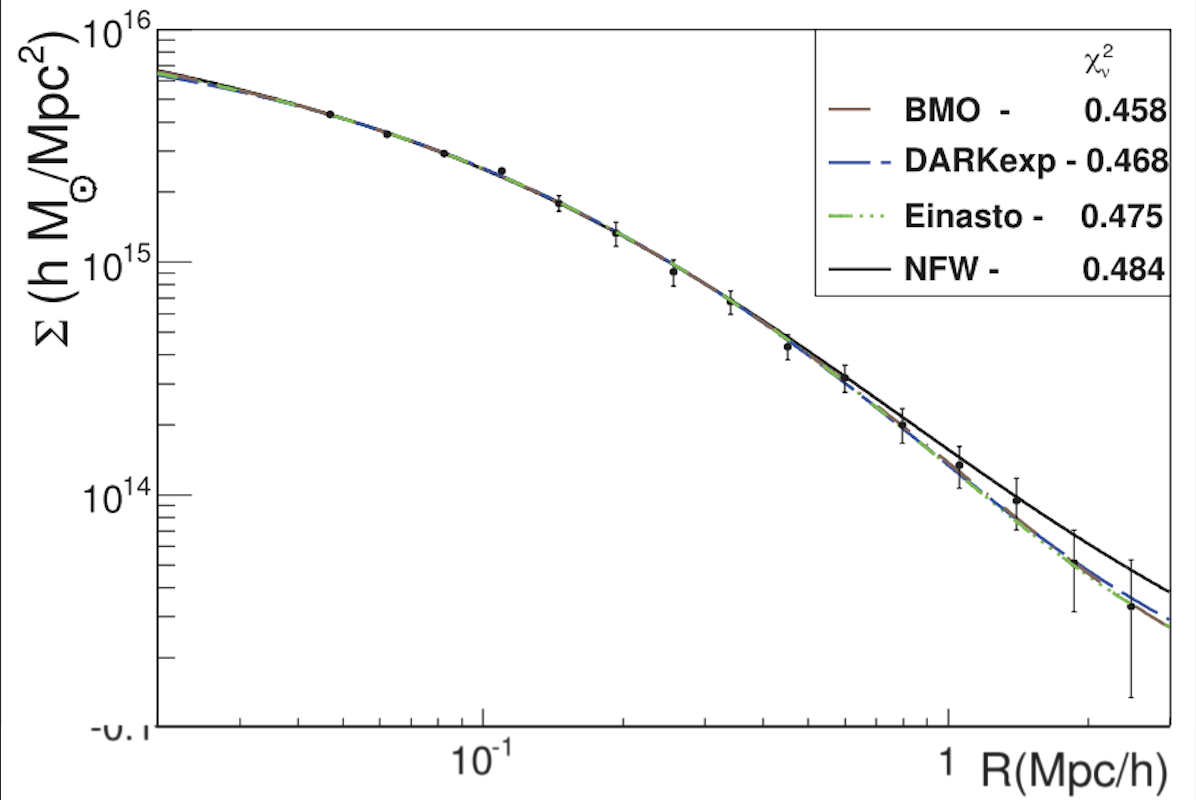
by Beraldo e Silva et al. (2013), where we show the importance of large-scale (cosmological) contributions in the density profiles of galaxy clusters. With these contributions, the NFW profile overpredicts the density in the outskirts, while steeper profiles like BMO, Einasto and DARKexp provide better fits.